 February 21: A changing tide?
February 21: A changing tide?
Feeling the need to be useful having finished my wall-building efforts (and probably procrastinating over the house-painting that really needs to be done), I’ve volunteered to be a guide at my local gallery in Castlemaine.
Though not certain if my capacity to interact with human beings whom I don’t know has survived intact after the Plague Year, nor if my specialisation in photography will disadvantage me in a museum full of ceramics, painting, drawing, prints and sculpture, the training sessions will no doubt confirm the move one way or another. In fact, I haven’t visited the gallery since 2019, and last wrote about James Tylor and Hayley Millar Baker showing there back in March, during the last Castlemaine Festival.

 So…in preparation I have been casting around Castlemaine Art Museum site to find out what they expect of guides before I go to my first information session this week.
So…in preparation I have been casting around Castlemaine Art Museum site to find out what they expect of guides before I go to my first information session this week.
Their Annual Report for 2019/20 contains a pleasant surprise…this lovely example of Federation Pictorialism (left). It’s a rather rare example of a vertical panorama when most such views, like that on the next page of the report, are made horizontal (see above).
As a bonus, and most likely the reason this is in the collection, is that it and the companion work, are of Castlemaine itself…our Botanical Gardens, which look not that much different now, though the European species are well-grown and the towering gums in the tall image have joined others collapsed, long since, across the stream, Barkers Creek, which runs from the North between the Gardens and the caravan park and swimming pool.
It is a romantic image in keeping with the Pictorialist style which dominated ‘art photography’ of the period right up to WW2 in Australia, defended by its ‘Blurry Eye’ proponents with much friction against the Modernist ‘Third Eye’ school in the 1930s, especially in meetings of the Sydney Camera Circle. Taken probably in 1905 these pictures were made when Pictorialism had a firm hold.
However, who took these photographs is difficult to determine from the Annual Report reproductions as the originals, in the process of being mounted on card, have had part of the original inscriptions cropped, and in the case of the vertical panorama, obscured. Only the word ‘Copyright’, in white, appears and can be seen to have been written in the same hand on each, though the tail of the ‘g’ is not as long in one. Darkened script (signatures?) are illegible on each.
The dark sepia outer mounts of both have the same title “Botanical Gardens Castlemaine” in a high-waisted round italic script, used also to sign ‘A. Verey & Co. Castlemaine’ on the lower right hand corner of the horizontal.
But as the captions in the Report tell us, Verey is not the photographer…both are attributed to R. Scott. Adolphus Verey (*1862) who had learned photography as an apprentice in Melbourne, built his own studio (soon extended to two stories) on the corner of Barker and Lyttleton Streets in Castlemaine in what, since 1964, has been the chemist’s but still boldly bears the sign A. Verey & Co on both frontages.
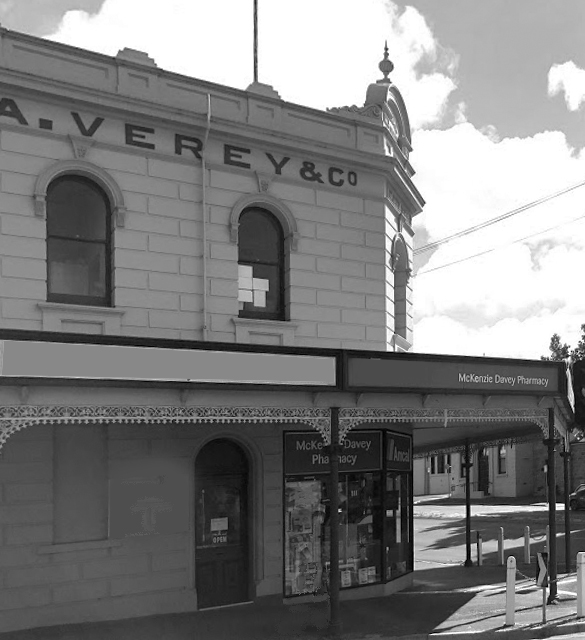
Postcards sold by Verey & Co can still be found in second-hand in antique shops in the district, and perhaps Scott’s pictures were sold as framed prints to locals. The quality of the Brothers’ own work can be gauged from this earlier scene, photo-bombed by a man standing obstinately at centre, arms folded, and his son with his penny-farthing beside him, in the then 20-year old Gardens in around 1884 (the Daylesford branch of the partnership had closed by 1889)
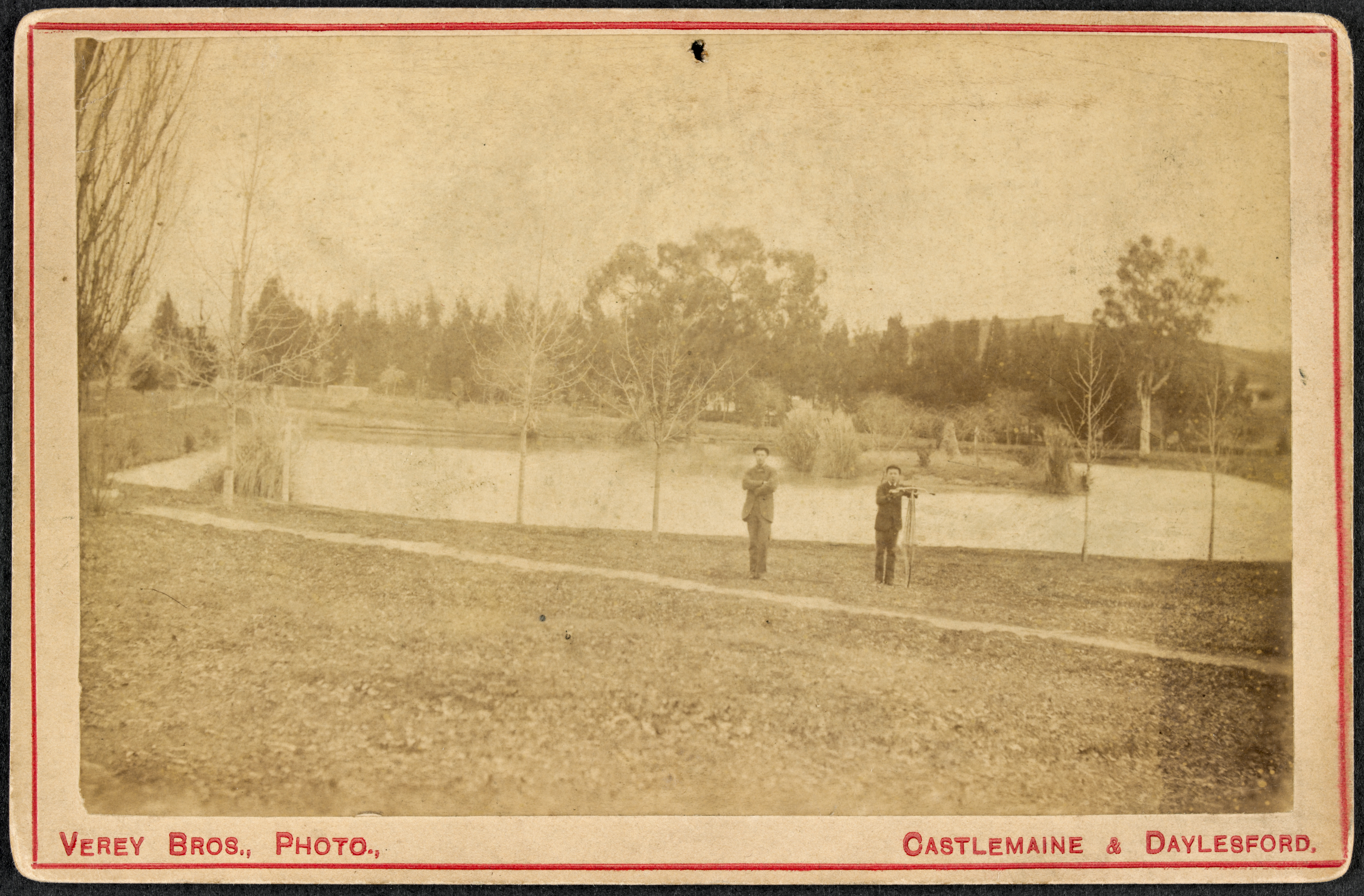
So who was R. Scott?

I just happen to have been reading Gael Newton‘s essay ‘Out of Sight’, in Shifting focus: colonial Australian photography 1850-1920 (with three other great essays on Lindt) and the name Scott, and panoramic imagery, clicked. She tells us that;
Robert Vere Scott was born in Brisbane in 1877, the seventh of ten children of a Scottish immigrant storekeeper father and an Australian mother. Nothing is known of his early life or training other than that he was based in Port Pirie, South Australia and was working as a photographer when he married in Adelaide in 1899. Vere Scott is first listed professionally in outback Broken Hill in 1900 but signed his images in the negative rather grandly as ‘R. Vere Scott’.
The vertical panorama is a departure from Scott’s more prosaic, usually elevated, horizontal views of city streets and cityscapes such as he was making in Melbourne between 1900 and 1906. Though based in Port Pirie, during this time he has traveled to Castlemaine and along the South West coast, though the dates are rubbery…photographs he made in New South Wales, South Australia and Western Australia, and later in New Zealand, are scattered across Australian holdings in public institutions and all bear close, estimated, dates.

Though none of his negatives have survived, it is likely Scott was using the 1899 Kodak Panoram No. 4 camera or the No. 1 of 1900.
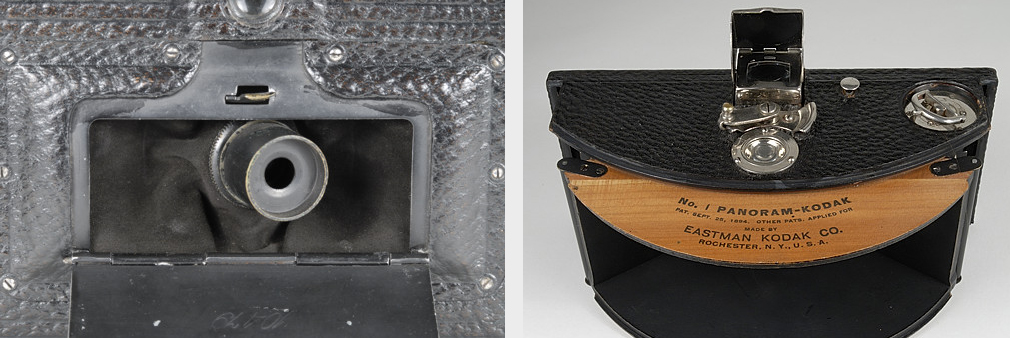

Scott moved to Adelaide where an article in The Adelaide Register of 19 Dec, 1907 declared under a headline Local Photographic Masters that Vere Scott had “‘recently imported the largest panoramic camera that had yet been brought to the Commonwealth, and that it was designed to take pictures 24 x 9 inches”.
That camera may have been the more cumbersome Kodak ‘Cirkut’ of 1904 which was a large format bellows camera that could be converted to make panoramas by mounting it on a geared turntable coupled to a a roll-film back which unrolled past a slit at the film plane, and was capable of 360º views. Its resolution is breathtaking even by current digital standards and it was being produced until 1945 and is used by some, even today.
Panoramic views of course were nothing new and in Australia had been produced since the late 1840s—one I’ve discussed being an example by polymath William Stanley Jevons. However these turn-of-the-century cameras dispensed with the need to laboriously piece together panoramas from a series of separate negatives by making it possible to encompass the whole view in a sweep on the one piece of film.
In Adelaide, by 1907 Scott achieved notoriety for his panoramic postcards produced in a romantic manner in the stamping ground of Australia’s most celebrated Pictorialist, John Kauffmann (1864–1942) with whom he was given equal billing in a special Christmas number of Adelaide’s The Observer newspaper. However it is clear from his most outstanding example, Ben Buckler, Bondi of about 1905, in the collection of the NGA, and contemporary with the Castlemaine image, that his embrace of the style was already well established. Both images are heavily manipulated with selective burning in and vignetting and a sense of depth exaggerated by the wide angle, but by turning the camera on its side for Castlemaine Gardens Scott encourages a sense of spatial immersion carefully organised around divisions of thirds which arrest our eyes on their transit from the depths of the water, seen probably from the bridge at the top of the Gardens, the passage of the Creek into the distance, to follow the wind-battered trunks into the clouded reaches of the moon.
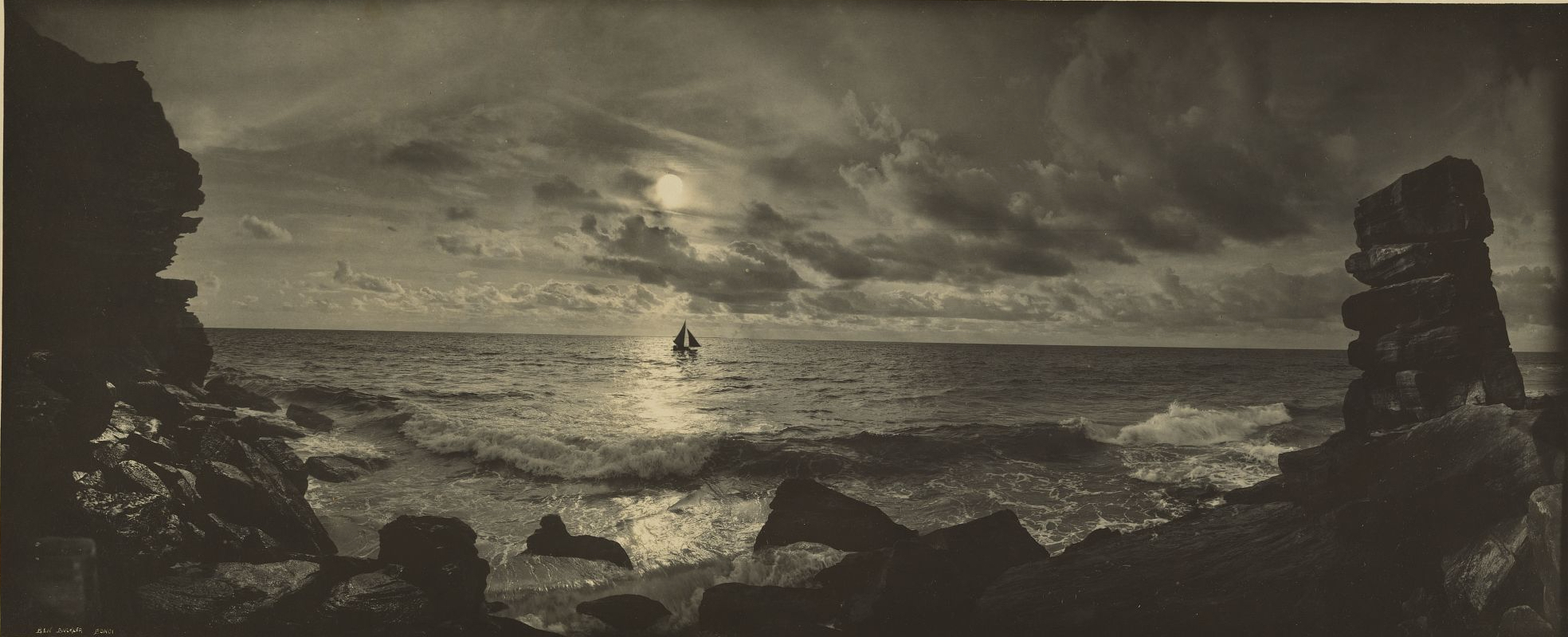
Castlemaine Art Museum is fortunate in possessing what may be a unique example of Scott’s more artistic work. It, like the NGA image, is in his ‘moonlit’ style; actually an underexposed negative printed heavily to look nocturnal, as can be confirmed from the sharpness and lack of motion blur of water in both images that would be impossible to achieve with the long exposures required under the light of the moon. Furthermore, I cannot locate any other Scott panorama that is a vertical. It is most certainly early, before he started using the ‘Cirkut’ camera, because that could not be operated on its side to produce a tall image.
 Later in 1907, Scott moved with his family to the goldfields of Kalgooorlie and set up a commercial studio there from which he produced far less romantic, but professional, pictures of horse races and other sporting events for the Kalgoorlie Western Argus and covered mining activities for a long article in The Lone Hand.
Later in 1907, Scott moved with his family to the goldfields of Kalgooorlie and set up a commercial studio there from which he produced far less romantic, but professional, pictures of horse races and other sporting events for the Kalgoorlie Western Argus and covered mining activities for a long article in The Lone Hand.
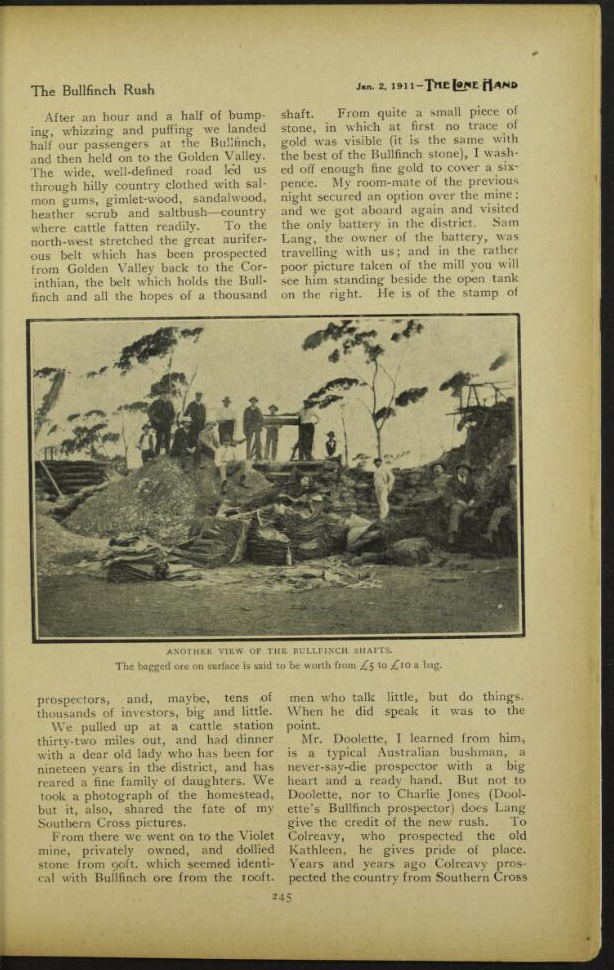
His work was to feature amongst the copious photographic illustrations of journalist Edwin J.Brady‘s 1918 monumental fact-filled tome Australia Unlimited that proposed transforming, with modern technologies, the desert interior of Australia so it could support 200 million Australians. Its extensive deployment of photographs supported statistical exposition for a “Romance of Facts”.

The trail fades there, as Scott left Australia for another frontier, at the height of the 1918 flu epidemic, to Almeda County, California where, as Newton notes, his WWI American draft registration card of September 12, 1918, records ‘Robert Scott, photographer, resident of 594, 62nd Street, Oakland, Alameda County, CA.,’ as ‘Tall Height, Medium Build, Blue Eyes, and Brown Hair, 3 Fingers from left hand lost. Physically disqualified,” though nothing is preserved from his photography in the United States.


4 thoughts on “February 21: Moonlit”